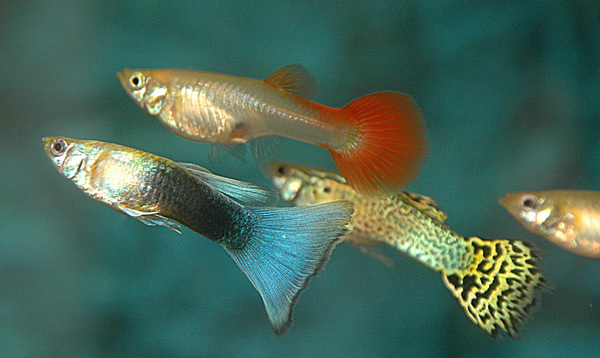By RICHARD MURRIHY
GUPPIES are probably the most popular livebearer among both aquarium owners and advanced breeders.
The once humble, dull-coloured guppy has become a sought after fish for hobbyists who are interested in genetic processes, resulting in many varieties of spectacular colourations and finnage.
Their ease of breeding means it is the first species many hobbyists begin to breed. However, because of intense breeding, fancier guppies can be harder to maintain.
Platys and Swordtails are of the same genus and are very similar in some aspects – in fact, interbreeding between the two species is possible.
The main difference is that male Swordtails have a ‘sword’ on their tails.
These two groups of fishes are also popular, colourful and active. These fish are robust and tolerant of a wide range of aquarium conditions and are recommended for beginners.
Mollies also make a great addition to the community aquarium and come in a range of bright colours.
These species belong to the livebearing Tooth Carp family of guppies which originated from South America and the West Indies. Mollies are native from Mexico to Venezuela. Platys and Swordtails are native from Mexico to Guatemala. Livebearers generally require harder water with pH over neutral – temperature: 22oC – 27oC, pH: 6.5-7. 8 with a general hardness: 100-300ppm.
Almost all of these livebearers are top feeders and will readily take most artificial and frozen foods. However, they should be given a diet with high vegetable content, and a dry food like a Spirulina Tropical Flake should be used occasionally.
The fry are about 7 to 10mm in length when born and are probably the most easily raised species as they will feed off finely ground dry foods and do not require smaller live foods like most other species when beginning to feed.
They are compatible with most community species in a densely planted community tank.
While there are many beautiful wild forms of livebearers, these species have been selectively bred throughout the world to produce a huge variety of colours, body shape and fin arrangement.
Livebearers give birth to free swimming young, instead of egg laying like most other fishes.
To achieve this, male livebearers have a modified anal fin called a gonopodium that is used to facilitate internal fertilisation of the female, so overall to care for livebearers, we need warm climate, balanced water and a good environment (tank) setup.







